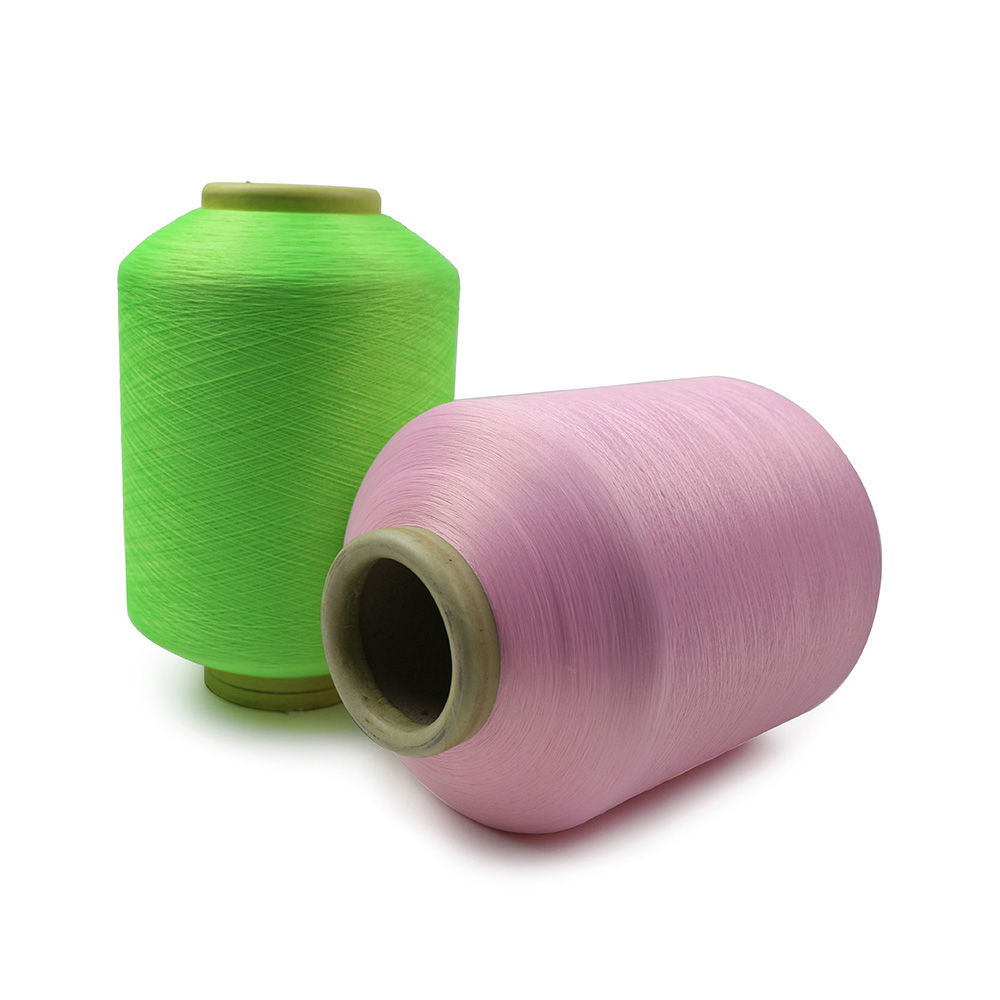If you are interested in some of our products, please feel free to visit our website or contact us for detailed information.

The properties of chemical fiber yarn can vary widely depending on the specific type of chemical fiber used, the manufacturing process, and any treatments applied. Here are some general characteristics related to strength, durability, and texture:
Strength:
1.Tensile Strength:
Tensile strength refers to the yarn's ability to withstand pulling or stretching forces without breaking.
Chemical fiber yarns, such as nylon and polyester, often exhibit high tensile strength, which makes them suitable for applications where strength and durability are essential, such as ropes and industrial textiles.
2.Abrasion Resistance:
Abrasion resistance is the yarn's ability to withstand wear and tear due to friction.
Chemical fiber yarns like nylon are known for their excellent abrasion resistance, making them suitable for products like backpacks, luggage, and seat belts that are subject to constant friction.
Durability:
1.Chemical Resistance:
Chemical resistance is crucial in environments where exposure to various chemicals is a concern.
Certain chemical fiber yarns, like polypropylene and aramid, exhibit resistance to acids, alkalis, and other chemicals, making them suitable for applications in chemical processing industries.
2.UV Resistance:
UV resistance refers to the yarn's ability to withstand the damaging effects of ultraviolet (UV) radiation from the sun.
Fibers like polyester are often treated to be UV resistant, making them suitable for outdoor fabrics, awnings, and marine applications where prolonged exposure to sunlight is expected.
3.Moisture Resistance:
Moisture resistance is important for maintaining the yarn's structural integrity when exposed to water.
Polyester, for example, is hydrophobic and resists moisture absorption, making it suitable for swimwear and outdoor gear that needs to stay dry.
Texture:
1.Smoothness:
Chemical fiber yarns can have a smooth surface, which can result in a soft and silky texture in fabrics.
This smoothness is desirable for clothing items like dresses, blouses, and undergarments, as it provides a comfortable feel against the skin.
2.Texture Variation:
Manufacturers can modify the texture of chemical fiber yarns during the production process to mimic the look and feel of natural fibers.
For example, acrylic yarns can be made to resemble the texture of wool, providing the warmth and coziness associated with natural fibers without the maintenance requirements.
3.Elasticity:
Some chemical fibers, like spandex (elastane), have inherent stretchiness, contributing to a different texture and feel in fabrics.
Fabrics incorporating spandex are often used in activewear and garments requiring flexibility and comfort.
The properties of chemical fiber yarns in terms of strength, durability, and texture can vary significantly depending on the type of chemical fiber, manufacturing processes, and treatments applied. These properties are carefully considered when choosing yarn for specific applications, ensuring that the final product meets the desired performance and comfort criteria.


Air covered yarn (ACY) is a type of yarn that involves simultaneously stretching the wrapped fiber filament and spandex filament through a certain type of nozzle, and regularly spraying and pressing it with highly compressed air to form a rhythmic network of points. The fabric feels soft and smooth.

 English
English Español
Español








